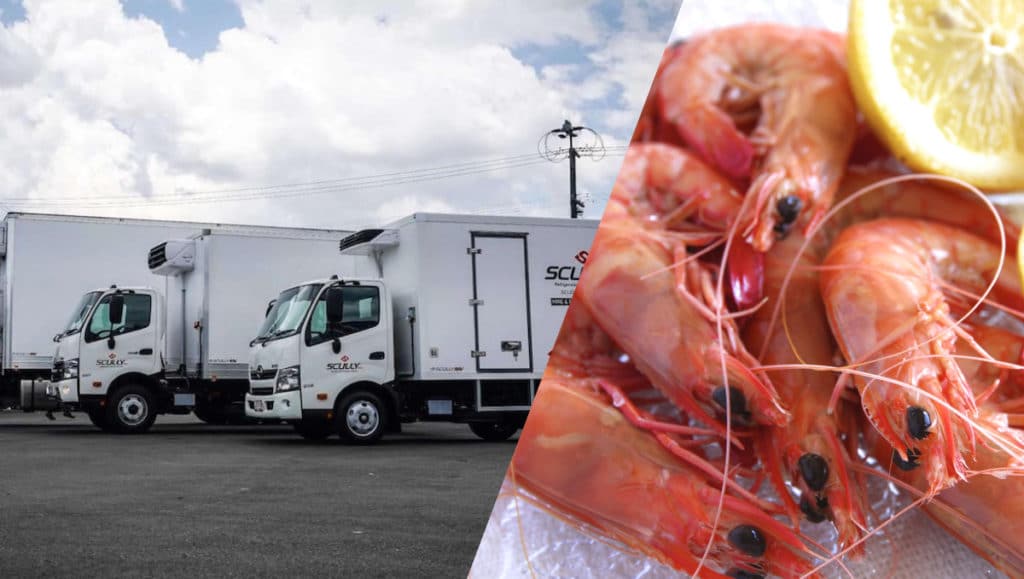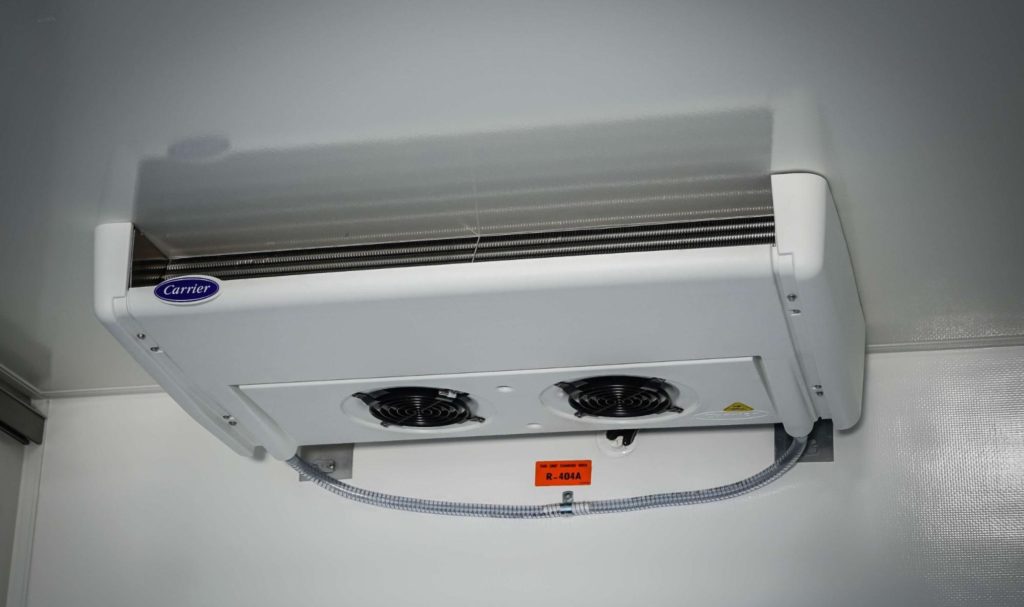
Whether you own a restaurant, food market or cold-chain delivery company, you’ll know that transporting seafood can be logistically challenging. The solution is temperature-controlled trucks that keep your climate-sensitive items fresh. In this blog, we’ll touch on the transportation process and how you can ensure you deliver fresh, safe seafood to customers.
Is Temperature Control Really Necessary?
When it comes to seafood, the answer is simple — yes. Same goes for fresh produce, frozen meat, chocolate and flowers. Each needs a climate-controlled environment to remain in sellable condition.
Food items can be a significant challenge because they are susceptible to rapid bacteria growth when exposed to lower than recommended temperatures. Tips for safe handling include:
- Inspecting each product and box on arrival
- Looking for evidence of thawing
- Asking for documentation of previous freezing temperatures
- Labelling and dating each product with “first in, first out.”
The recommended temperature range for transporting seafood is typically between -1°C and 4°C. Some types of seafood, such as frozen products, should be maintained at -18°C or lower. This temperature range helps to ensure the seafood stays fresh, safe and flavoursome for consumption by inhibiting the growth of harmful bacteria and minimising spoilage.
Improper delivery or transport of seafood can lead to many diverse and negative consequences, impacting health and economic aspects.
Health Consequences:
- Foodborne Illnesses: Improper temperature control can lead to the growth of harmful bacteria like Salmonella, Vibrio, and Listeria, causing food poisoning.
- Parasite Infestation: Poor handling can invite parasites (e.g. Anisakis), posing health risks when consumed.
- Allergic Reactions: Cross-contamination with allergens can trigger severe reactions in vulnerable individuals.
- Chemical Contamination: Inappropriate storage conditions might lead to chemical reactions that produce harmful compounds in some fish types.
Economic Consequences:
- Product Spoilage: Seafood is highly perishable, and improper handling can lead to significant spoilage, resulting in financial losses.
- Increased Costs: Spoilage and contamination can lead to increased disposal costs, additional quality checks, and product replacement.
- Reputation Damage: Incidents can damage businesses’ reputations, leading to negative reviews, customer loss and reduced sales.
- Legal and Regulatory Penalties: Failure to comply with food safety regulations can result in hefty fines, legal action, and licence revocation.
- Insurance Claims: Improper seafood storage and handling can lead to higher insurance premiums or claims.
Environmental Consequences:
- Waste Generation: Spoiled seafood contributes to food waste, increasing the burden on waste management systems and environmental pollution.
- Resource Depletion: Wasting seafood also means wasting the resources (like water and fuel) used in harvesting, processing, and transporting the products.
Operational Consequences:
- Supply Chain Disruption: Spoilage can lead to frustrating delays and disruptions in the supply chain, affecting the availability of seafood products and customer satisfaction.
- Loss of Market Access: Consistent quality issues can lead to loss of access to specific markets or retailers, impacting future revenue.
Unique Features Make Temperature Controlled Trucks Essential
Compared to standard transportation trucks, temperature-controlled trucks have much more advanced features.
- Refrigeration Unit and Insulation: They are designed with a refrigeration unit and a fibreglass body for insulation to maintain consistent temperatures throughout the delivery.
- Temperature Monitoring System: Scully RSV trucks are equipped with a temperature monitoring system, which intelligently controls and tracks the internal temperature. If the temperature goes beyond the acceptable range, the system sends real-time alerts to the driver and/or central monitoring team.
- Temperature Records: The system creates a record to show that the goods are being kept at a safe temperature from leaving the warehouse or dock until they reach their final destination.
- Protection Against Claims: This log can protect your business and your employees if faced with a claim that improper food handling caused illness.
Keep chill on the go
Unlike stationary freezers or chillers, these tech-savvy trucks are designed to keep seafood at optimal temperatures on the go, accommodating the entire delivery process from warehouse to final destination.
They are the ideal solution for businesses that need to drive seafood over long distances or in varying climates.
To learn more about their refrigeration technology, check out our blog How Refrigerated Trucks Work.

Route Selection & Reliability: a Top Priority
When temperature-sensitive goods are involved, route selection must be considered. In the hotter months of the year, choosing a route that minimises the number of times the driver must open the doors can be extremely important.
In the realm of logistics, vehicle reliability is non-negotiable. However, when it comes to transporting perishable goods, this reliability takes on a dual-significance, encompassing not just the engine but also the air conditioning systems. This underscores the complexity of the task and the criticality of proper servicing and maintenance.
Enhance Your Cold Chain Logistics With Scully RSV
You can ensure the integrity of your seafood deliveries with a Scully RSV temperature-controlled truck. For over 30 years, we have been manufacturing and servicing high-quality refrigerator trucks for the cold chain logistics industry. As market leaders, we know what matters most to customers — delivering outstanding service. Get in touch with us today.

